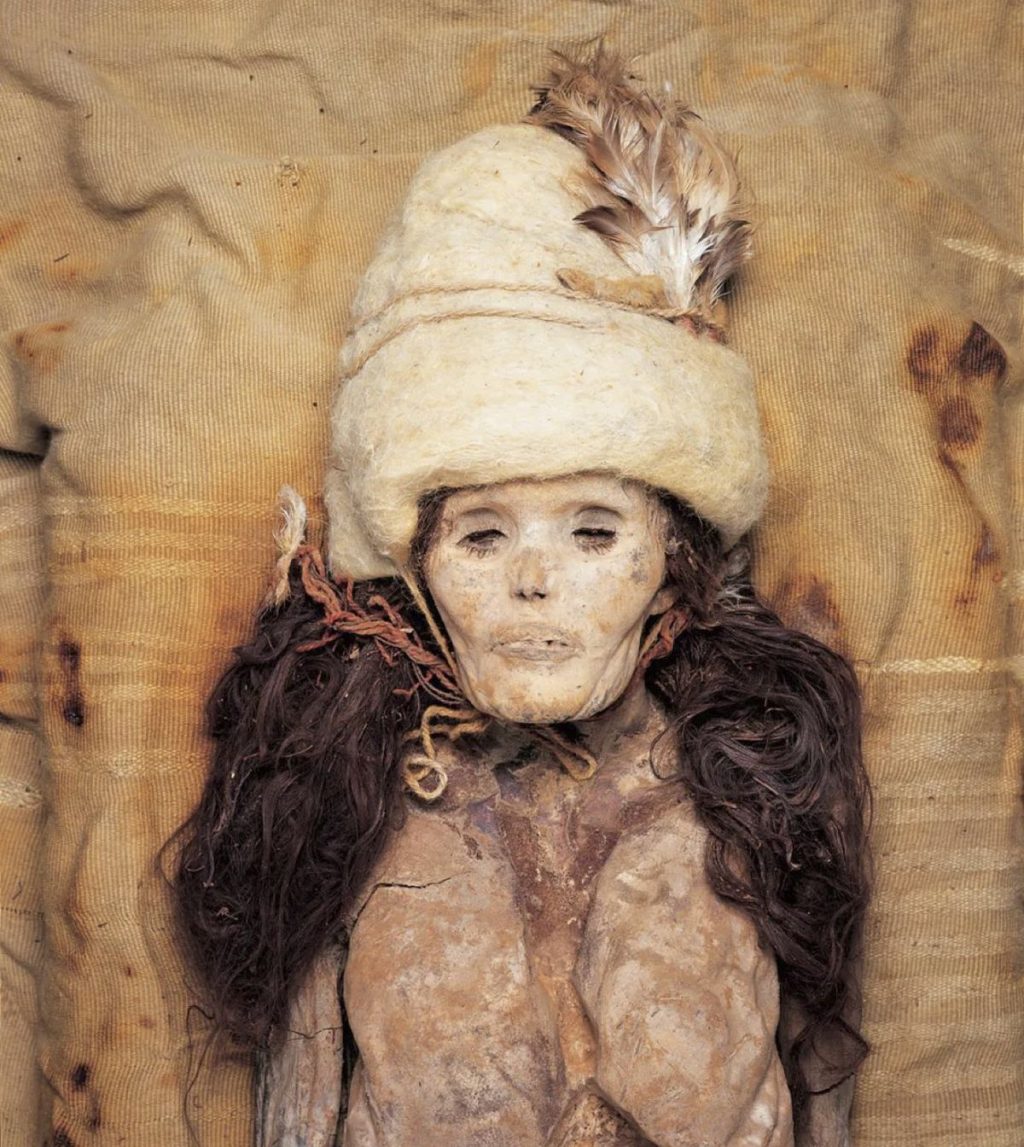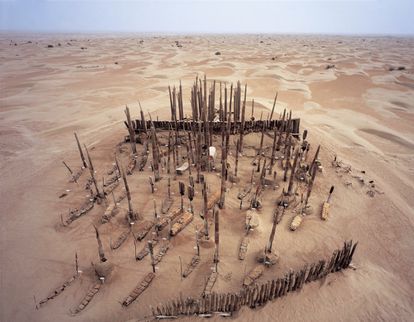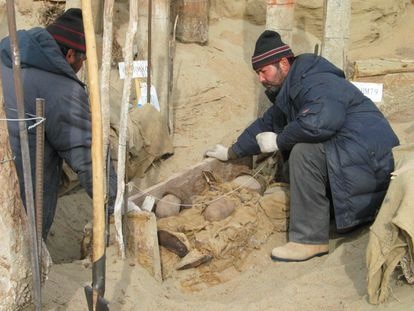Taklamakán: Solve the mystery of 4,000-year-old mummies with a modern look | Science


American historian Victor Mayer He often says that when he first saw the Xiaohe culture mummies in 1988, he thought so It was a scam for tourists. The bodies, now found in what is now the Taklamakan Desert in western China, were about 4,000 years old, but they were surprisingly well preserved, with brightly colored clothing and sophisticated decorations. They looked almost like living people. The most surprising thing is that they are almost all Caucasian. Where did they come from and how did they end up in the heart of Asia? “, Mir wondered at that time. The historian proposed a theory: that colorful civilization from the Bronze Age can not be created In that harsh corner. Its first members had to be Indo-European immigrants, who arrived on horseback from remote parts of Eurasia. An international scientific team now confirms that they have solved the mystery: the surprising members of the Xiaohe culture, they say, did not come from the distant mountains: they were an indigenous, unmixed population for more than 9,000 years.
The Tarim River Basin is located in the Xinjiang Uyghur Autonomous Region, an extension of the Silk Road that fits the theme of crossroads of cultures. Hundreds of naturally embalmed people have appeared there in recent decades, thanks to the dry and cold climate, often buried in mysterious wooden ship-shaped coffins. Anthropologist Christina Wariner It describes one of the most remarkable features of the Tarim mummies: their supposedly Western appearance. “They were tall, with brown and sometimes light hair, and some men had thick beards,” explains the researcher from Harvard University (USA). Some individuals were even buried with masks with long noses. One of the most famous mummies known, the so-called Bella Di XiaoheHe presented a flashy dress of felt and sheep’s wool, as well as a majestic white hat.

The origin of these mummies has always been controversial, with three main hypotheses on the table. Someone argues that the developed Xiaohe culture comes from migratory pastoralists from southern Siberia, who in turn are associated with the Yamnaya, the nomads who left the steppes and whose descendants ended up replacing almost all humans on the Iberian Peninsula for 4,500 years. The other two theories hold that they were farmers from the mountains of Central Asia or the oases of present-day Afghanistan.
Christina Wariner’s team believes that none of the three hypotheses are correct. Scientists have now analyzed the DNA of 13 Tarim mummies and their results indicate that they were aboriginal people, without master mixtures, for more than 9,000 years. However, despite this remarkable genetic isolation, the group was “culturally cosmopolitan”. Its members cultivated wheat, barley, and millet, three plants that were domesticated in the Middle East or northern China. They also made cheese using kefir-style fermentation, a technique they probably learned from the descendants of Siberian shepherds. They buried their dead with sprigs of ephedra, a plant considered medicinal in the oases of Central Asia.
“We were struck by the stark contrast between their genetic isolation and their cultural connections,” Wariner admits. The anthropologist adds: “It is not clear how and why they maintained such strict genetic isolation, but it was their openness to adopting new technologies that most likely made them successful in colonizing the desert oases of the Tarim Basin.” Investigate colleagues from China, Germany and South Korea.

The study was published on Wednesday in the magazine temper nature, shakes up the strange hypotheses he has defended for decades. Historian Victor Mayer, professor of Chinese at the University of Pennsylvania (USA) and one of the leading experts on these mummies, declined to comment on the new research. “I think it is fundamentally flawed,” he confined to the assertion to this newspaper.
Meyer published a reference book two decades ago, Tarim mummies (Publisher of The Times and Hudson). The co-author of this volume, Archaeologist James MalloryHe believes the new study is “very interesting and valuable, although its results are not surprising.” Mallory of Queen’s University Belfast (UK) believes that genetic analysis ignores the fourth “most chronologically likely” hypothesis: that Okunivo – another of the Eurasian steppe cultures During the Bronze Age – they were the ancestors of the dried people of the Tarim Basin.
Mallory himself Already studied in 2015 The similarities between these two societies, overlapped in time about 4,000 years ago. The expert argues: “If they had compared DNA with Okunivo’s DNA, the study would have been more robust.” archaeologist Paula Doumani Dupuis, from Nazarbayev University (Kazakhstan), a different opinion in a parallel article in the magazine temper nature. In his view, the new analysis “has already answered the question of the genetic origins of Xiaohe culture.”
The search for the roots of the mummies was flammable from the start. Many Uyghurs – the Turkmen-speaking and Muslim minority who live in the area today – want independence from China and They hugged right away To the mummies of the unique Tarim tribe, whose 4,000-year-old age is supposed to give priority over the Han ethnic group, who make up the majority of the country, who arrived about 2,000 years later. In fact, he argued five years ago Victor Mayer himself, the Uyghurs arrived in the Tarim Basin a thousand years after the arrival of the Han. The historian also claimed that members of the Xiaohe culture were also ‘Peaceful and just people’, with no weapons or significant differences in status in their graves. What seems clear is that the colored mummies have nothing to contribute to the wars of the twenty-first century.
You can write to us manuel@esmateria.com the following Thing employment Facebook social networking siteAnd TwitterAnd Instagram Or subscribe here on our website the news.

“Future teen idol. Hardcore twitter trailblazer. Infuriatingly humble travel evangelist.”




:quality(85)/cloudfront-us-east-1.images.arcpublishing.com/infobae/BNGH73UCKQAZSQPCODUWO2BE5Y.jpg)





